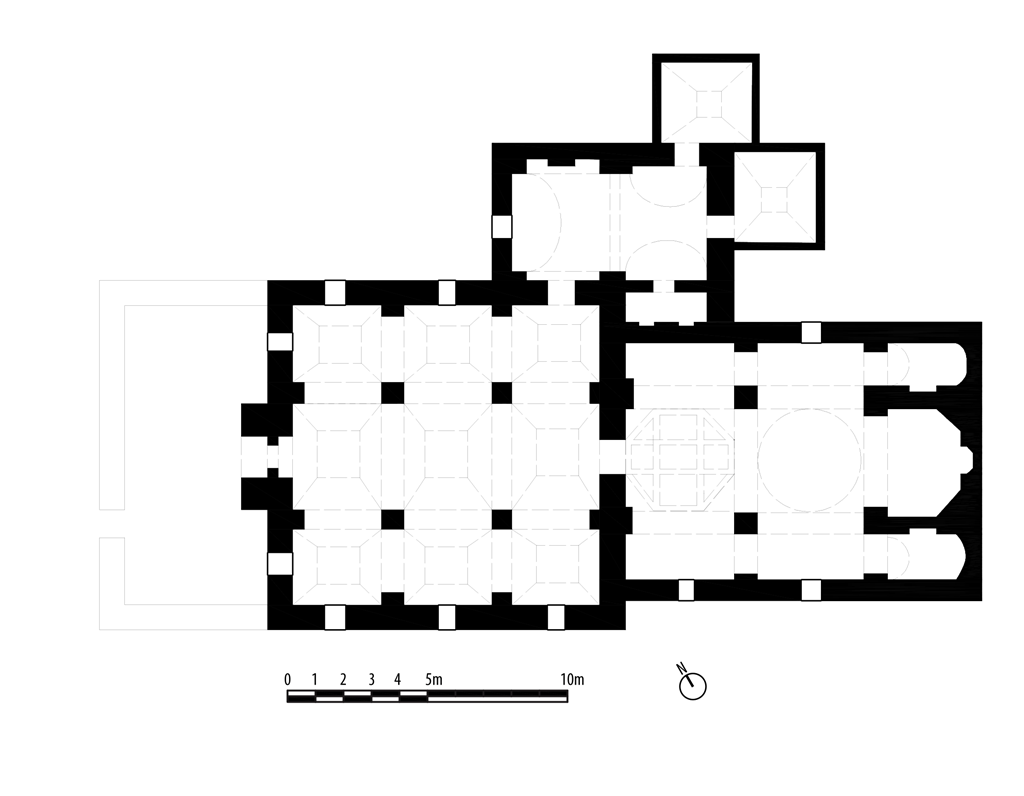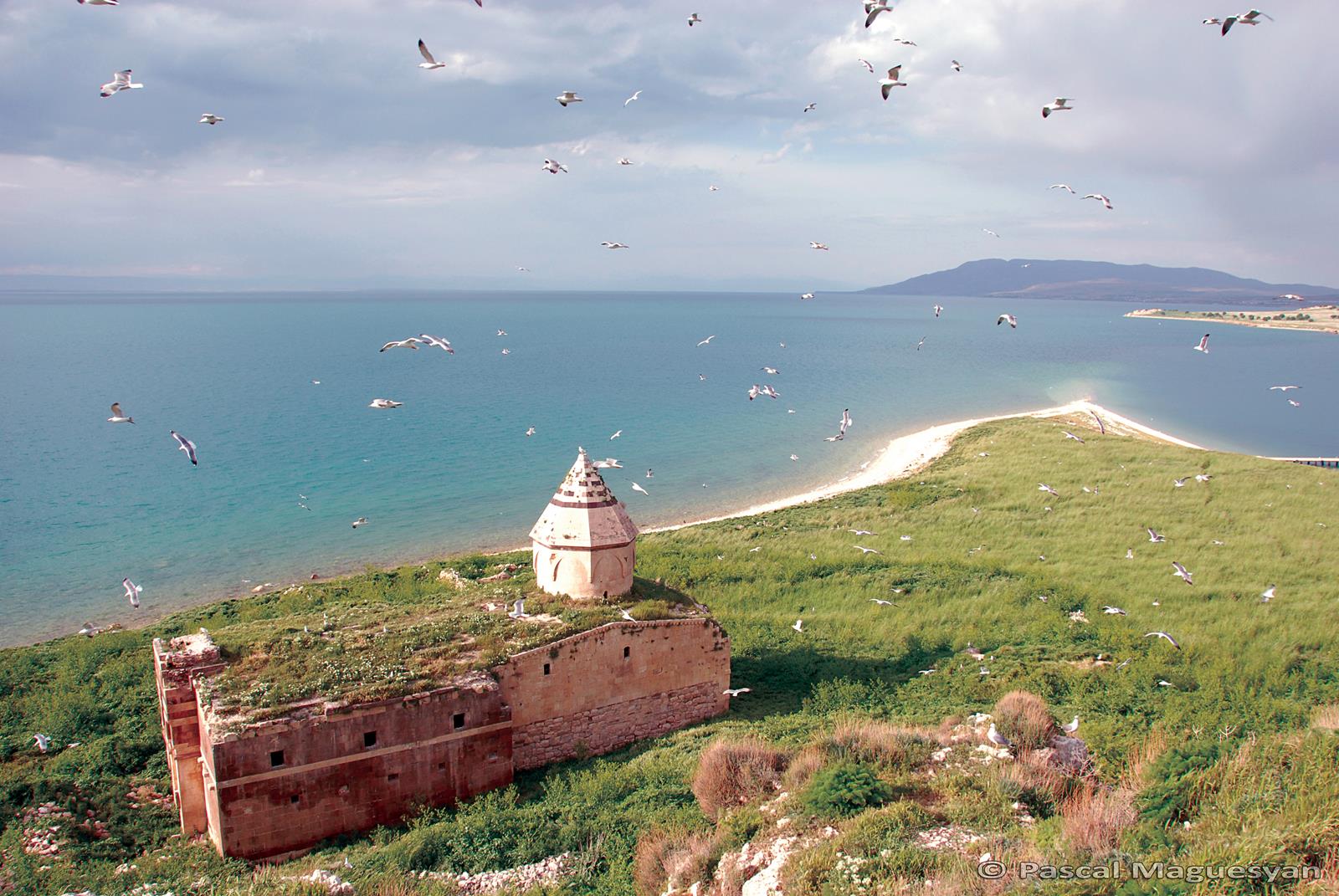The Gduts [Çarpanak Adası] hermitage, or desert, is built on an island of the same name in Lake Van, at the tip of a downward-curving peninsula that projects from the eastern shore, at 38°36'N and 43°05’E. The name Gduts means literally “beak” and probably refers to the geography of the site. This island is 42 km as the crow flies from the island of Lim, which lies further north off the same shore.
Tradition traces the foundation of the desert of Gduts to Saint Gregory the Illuminator, but the hermitage does not appear in the texts until 1414, at which time it was already flourishing. Restored in 1462, the buildings seem to have been abandoned in the course of the 16th century due to the Turko-Persian wars, and the community reduced or dispersed. The hermitage was not reborn until the following century – it was active in 1604 – as the result in particular of efforts on the part of prior Nersès of Mogs on behalf of the neighboring desert community of Lim (n° 3). Upon the death of Nersès, his successor, Stephen of Shadakh (Sdep‘anos Shadakhtsi , 1627-1646), sent part of the Lim community to the island of Gduts, which fuelled a new development. Some fifteen manuscripts dating from this period are today held in the Madenataran National Library in Yerevan. In 1712, at the urging of the catholicos of Edchmiadzin, Alexander I, the archbishop and prior, Simeon, and the bishop, Jeremiah (Eremia), undertook to restore the site. Originally from Paghdesh [Bitlis], Jeremiah obtained financial support from the Armenian merchants of the town and commissioned the architect Khoshkhabar of Paghdesh (Khoshkhabar Paghishétsi) to build a new church on Gduts. Between 1713 and 1720, he rebuilt the hermitage church, which remained dedicated to the Holy Precursor, John the Baptist (Surp Garabed). A short time later, Bishop Garabed Tadig added a large narthex, and a second Garabed built a bell tower. Gduts was plundered in 1840, but during the massacres of 1894-1896 the island was able to take in numerous refugees. The last prior of the desert of Gduts, Father Stepanos Daghazadian, died in 1911. At that time, Lim and Gduts were united under a single abbot, whose seat was occupied until 1915 by Father Hovhannes Hussian. The island was once again plundered in 1915.

Plan (Thierry, 1989, 167, modifié)
The desert of Gduts includes the church of the Holy Precursor, with its columns and central drum, preceded, above the western wing, by a small window delimited by crossed arches (1713-1720); a narthex with four central pillars and a bell tower, both built in the 18th century; the chapel of the Holy Archangels adjoining the north side of the narthexand the church and opening onto a library. Access to the church was through the narthex and by a carved wooden door flanked on either side by the tombs of the builder-bishops Simeon and Jeremiah. The walls of the narthex, like those of the church, were covered in paintings. This complex was completed by a number of outbuildings, among others the bursar’s office, the refectory, the storerooms, the monks’ cells to the northeast of the church (124 cells grouped by pairs), a small hostelry to the east and the prior’s house to the south, as well as a cemetery, gardens and orchards. Like the hermitage of Lim, that at Gduts had a house for those who had not (or not yet) taken vows (Trsi doun) on the opposite shore: this held a chapel, classrooms and cells for the novices, storerooms and a stable. The hermitage also had properties in eight villages in its jurisdiction as well as in Van and Constantinople.

Vue générale, 2011 (Coll. P. Maguesyan).
The Gduts hermitage and its dependencies were confiscated after the Great War and left empty. The church of the Holy Precursor is still standing, as are its narthex – the bell tower was pulled down however – and the chapel of the Holy Archangels. However all of the outbuildings were destroyed and the cemetery ravaged. Nothing remains either of the externs’ house.
Oskian, 1940-1947, I, 51-86. Thierry, 1989, 161-173. Devgants, 1991, 248-254.